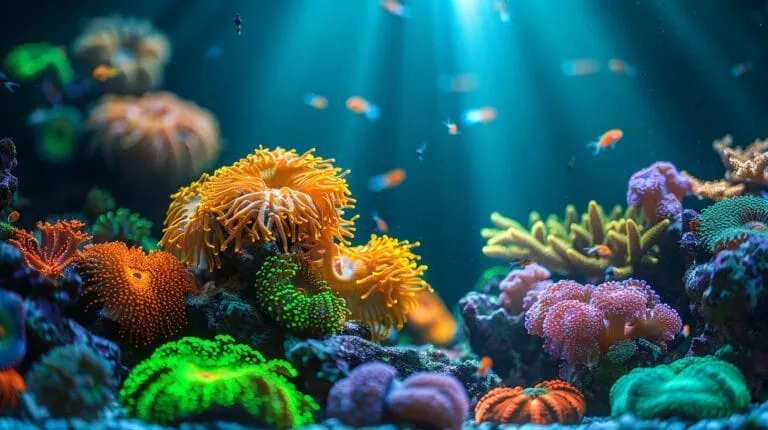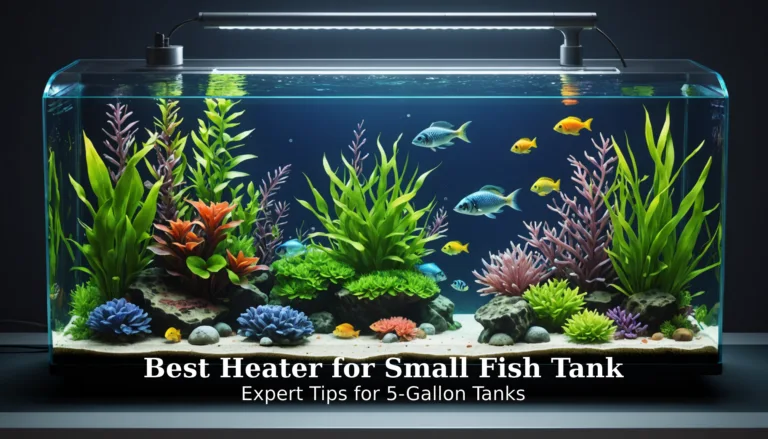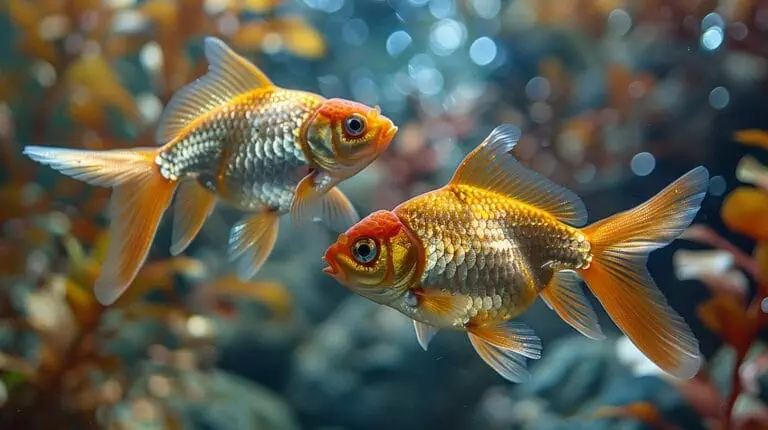When setting up a 10-gallon fish tank, we often wonder just how much gravel we really need. Striking the right balance is important—not too much, not too little. Typically, a depth of around 2 inches is ideal, which translates to about 10-15 pounds of gravel. But what factors should we consider when deciding on the exact amount?
Understanding the natural habitat of our fish species and the type of gravel we choose can make all the difference in creating a healthy aquatic environment. Let’s explore how to determine the perfect gravel depth and type for our specific needs.
Key Takeaways
- Aim for a gravel depth of around 2 inches in a 10 gallon tank.
- Use 1 to 1.5 pounds of gravel per gallon of water.
- Typically, 10 to 15 pounds of gravel is sufficient for a 10 gallon tank.
- Avoid overloading the tank with gravel to maintain adequate water volume.
- Choose gravel size suitable for both fish safety and effective filtration.
Understanding the Role of Gravel in a 10 Gallon Fish Tank

Aquarium gravel is more than just an aesthetic addition to our tanks—it’s essential for creating a thriving habitat for our aquatic friends. When we introduce a gravel substrate into our 10-gallon tank, we facilitate effective filtration. The gravel traps debris and provides a breeding ground for beneficial bacteria. These bacteria play a vital role in breaking down waste products and keeping the water clean.
Gravel also serves as a secure anchor for plants and decorations. This not only boosts aesthetic appeal but also generates hiding spots and territories for the fish, making them feel more at home. Live plants, in particular, benefit from gravel as it enables their roots to spread and take hold, promoting healthy growth and contributing to the tank’s oxygen levels.
Moreover, gravel helps maintain stable water chemistry. It can buffer the pH levels, creating a more stable environment. Essentially, the right gravel substrate transforms a simple 10-gallon tank into a balanced, self-sustaining ecosystem.
How Much Gravel Does a 10 Gallon Fish Tank Need?

To determine the quantity of gravel a 10-gallon fish tank requires, let’s start by calculating the ideal depth. As a general guideline, aim for a gravel depth of around 2 inches. This depth provides a stable base for plants and decorations while offering enough surface area for beneficial bacteria to flourish.
Now, let’s break it down to pounds. It usually takes about 1 to 1.5 pounds of gravel per gallon of water for a 10-gallon tank. Hence, we’re looking at approximately 10 to 15 pounds of gravel. This range allows for some flexibility, depending on the specific needs of the fish and plants we’re planning to house. It’s important to consider the size and shape of the gravel when choosing the right amount for the tank. Larger gravel particles can create more open spaces for water to flow through, which can help prevent buildup of debris and waste. Additionally, having the right amount of gravel in the tank can also impact the effectiveness of the best fish filter, as it provides a surface for beneficial bacteria to colonize and break down harmful substances. Therefore, it’s crucial to carefully consider the amount and type of gravel for the overall health and balance of the aquarium ecosystem.
The species of fish and plants we choose may influence our decision on the type and amount of gravel. Some species, like bottom dwellers, prefer a thicker layer, while others might be fine with just an inch or so. It’s crucial to consider the natural habitat of the species we’re keeping to make their environment as natural as possible.
Finally, let’s dispel a common misconception: more gravel doesn’t always equate to better. Overloading our tank with gravel can decrease the water volume and make cleaning more difficult. It’s best to stick to the recommended range to keep our 10-gallon fish tank in optimal condition.
Choosing the Right Gravel for Your Aquarium

When choosing the right gravel for our aquarium, it’s crucial to consider factors such as size, color, and material. These aspects ensure that our selection meets the needs of our fish and plants. Gravel selection for a 10-gallon tank is about more than aesthetics—it’s critical for proper maintenance and the overall well-being of our aquatic environment.
Let’s start with size. The gravel we choose should be small enough not to trap food particles but large enough to prevent fish from ingesting it. Next, consider color. We can pick from natural hues to vibrant shades, but it should complement our tank decor and not stress our fish. Lastly, consider the material. Some materials are inert and won’t alter the water chemistry, while others can affect pH levels. It’s important to choose a type that suits our specific fish species and plants.
How to Clean and Replace Gravel in Your 10 Gallon Tank

Regular cleaning and replacement of the gravel in our 10-gallon tank is key to maintaining a healthy aquatic environment. Over time, waste, uneaten food, and debris accumulate in the gravel, which can lead to poor water conditions if not addressed.
Here’s a quick step-by-step process to clean and replace the gravel in our 10-gallon tank:
- Partial Water Change: Before starting, remove about 30% of the water and set it aside. This preserves the biological balance when we reintroduce the cleaned gravel.
- Gravel Vacuuming: Use a gravel vacuum to siphon out debris without removing all the gravel at once. This minimizes stress on our fish and maintains a stable environment.
- Replacing Gravel: If the gravel is beyond cleaning, replace it gradually. Remove and replace small sections over several weeks to prevent shocking the system.
Expert Tips for Maintaining a Healthy Gravel Bed in Fish Tanks

Maintaining a healthy gravel bed in our fish tanks begins with understanding common issues and how to prevent them. Ensuring our gravel is clean and free from debris is vital. Regular cleaning and siphoning can prevent harmful bacteria buildup and keep our fish healthy.
Here’s a quick reference table to keep our gravel bed in top shape:
| Task | Frequency | Purpose |
|---|---|---|
| Gravel Vacuuming | Weekly | Remove waste and excess food |
| Full Gravel Cleaning | Every 3 months | Deep clean to prevent toxin build-up |
| Visual Gravel Inspection | Bi-weekly | Check for discoloration or debris |
Lastly, while some debate whether fish tanks can function without gravel, we believe it’s essential for creating a natural habitat. A well-maintained gravel bed supports beneficial bacteria and provides a comfortable environment for our fish, ensuring they thrive in their aquatic home.
Conclusion
To wrap things up, let’s make sure our 10-gallon fish tanks are set up for success by sticking to the recommended 10 to 15 pounds of gravel. This creates a balanced environment that’s easy to maintain and keeps our fish happy.
Remember, choosing the right type of gravel and maintaining it properly will go a long way in fostering a healthy aquatic habitat.
Let’s enjoy our aquariums and give our fish the best home possible!
Frequently Asked Questions
How much gravel do I need for a 10 gallon fish tank?
The general rule is to use one pound of gravel substrate per gallon of water in your tank. Therefore, for a 10 gallon tank, you would need around 10 pounds of gravel. Additionally, it’s important to choose the best fish filter for your tank size to ensure proper water filtration and maintenance. A good rule of thumb is to look for a filter that can process at least 3-5 times the volume of your tank per hour. This will help keep your water clean and free of debris and waste.
Why do fish tanks need gravel?
Gravel in a fish tank serves multiple purposes such as providing a habitat for your fish, helping to keep the fish healthy and happy, and creating a natural environment that simulates their natural habitat.
How does gravel help keep the fish tank clean?
Gravel helps to trap debris and fish waste, preventing it from floating around the tank and impacting water quality. It also houses beneficial bacteria that break down waste and help to reduce ammonia levels in the tank.
Can I use gravel from outside and place it in the tank?
It is not recommended to use rocks and gravel from outside in your fish tank as they may contain harmful chemicals or bacteria that could harm the fish. It’s best to use gravel specifically designed for aquarium use.
How should I clean the gravel in my fish tank?
You can clean the gravel by using a gravel vacuum during water changes to remove debris and waste trapped in the substrate. Avoid completely replacing all the gravel at once as it can disrupt the beneficial bacteria balance in the tank.






